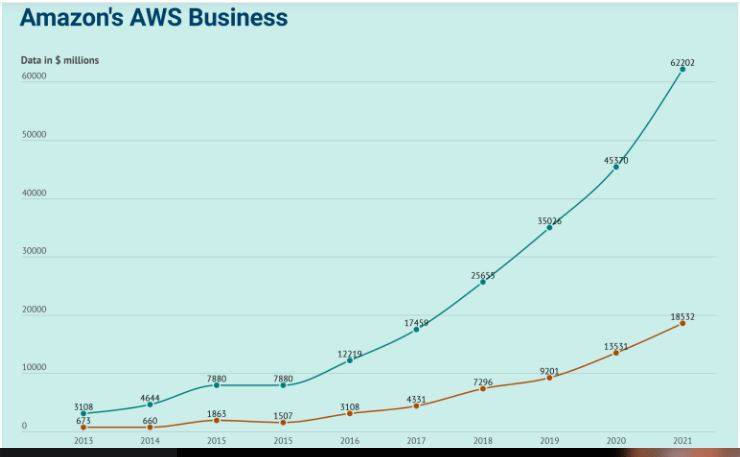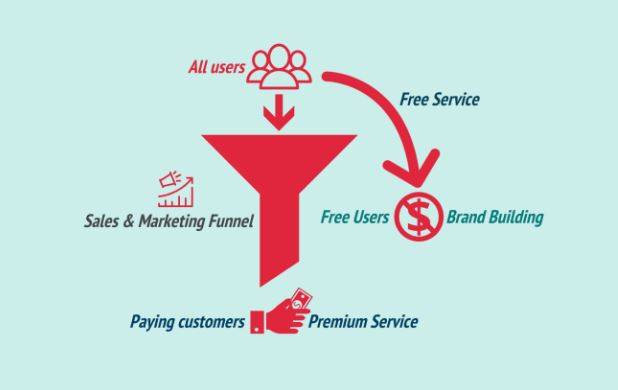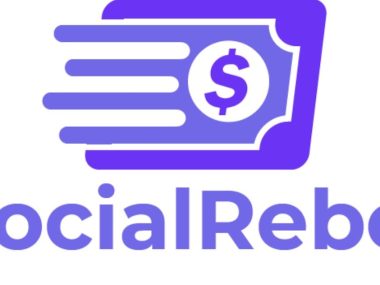A digital business model could be defined as a model that takes advantage of digital technologies to improve several aspects of an organization. From how the business acquires customers, to the product/service it provides. A digital business model is a case when digital contributes to enriching its value proposition.
Some Myths About Digital Business Models
We all like to think of digital business models as innovative in their own right.
However, in many cases, innovation occurs by combining aspects of business models to create a unique formula.
Not a single formula, but rather a recipe with several ingredients to test
Almost like taking existing ingredients and remixing them using different quantities and cooking times, a business model “innovation” is often the result of these recombinations.
And that requires a lot of tuning.
Digital is not only about the product/service
You create an ebook, sell it on the web, and call your business a digital business.
Sure, it’s a digital product, but just because your product is delivered digitally doesn’t make it a digital business. There are a few other things to consider.
Digital is not only about distribution
You build a website, call it a platform, and you have a digital business. However, a website is like a physical storefront, in order for you to create a sustainable flow of customers/partners/users, you need to make it scalable.
This requires understanding which models are the best fit and identifying potential customers/users.
Start simple, make it viable
If you look at a business model like Google, you see it as a complex platform from the start. However, it took years for Google to develop all the basics (former Google AdWords and Adsense) to make it extremely scalable.
Initially, Google was just making advertising deals on its search pages relying on sellers, just like a traditional organization.
When Google finally built its two main advertising platforms (AdWords, now Google Ads and AdSense), it’s business growth accelerated, along with its traffic growth.
Before Netflix became a viable streaming platform it took decades. And before that, it was primarily a DVD rental company. DVD rentals, in 2019, accounted for less than 2019% of Netflix’s overall revenue (interestingly enough, the company still reported over two million DVD members in 2019).
Yet, when video streaming became technically viable, Netflix’s business model also evolved, thereby surfing a different market (video streaming) rather than DVD rentals.
A simple business model that provides enough value to potential customers will get you through the early stages of growth.
A model for each step

Amazon wanted to develop a way for third-party sellers to build their e-commerce on top of Amazon’s infrastructure (at the time called Merchant.com) to further its mission of providing a wide variety of products.
That said… Merchant.com was a “confusing mess “, and over the years the company grew into what would become Amazon AWS, now one of Amazon’s most successful business units.
Whereas Amazon AWS is now a business within a business.
This infrastructure has helped Amazon create a more scalable business model and move to a different stage of growth that probably wouldn’t be possible without AWS input.
Yet what would later become AWS didn’t begin development until 2000 (Amazon started in 1994). And it is only after a few stages of hypergrowth that the company passes.
A new way of doing business
Therefore, building a digital business requires mastering new ways of looking at your business. They mainly revolve around a key pillar (your customers/users or those for whom your service/product brings a clear advantage) and a few elements:
Product / Service
Building a digital product/service requires a mindset that ranges from something rare to something potentially limitless. Digital products/services can also be quite expensive.
Think about how platforms like Google have to spend billions to continue operating their digital assets by also investing in massive physical infrastructure (data centers).
Yet these products often exploit network effects. A business model platform generates value by enabling interactions between people, groups, and users by exploiting network effects.

Platform business models generally have two components: supply and demand. Starting interactions between these two parties is one of the crucial elements of a successful business model platform.
Distributors
Building a digital distribution means understanding the different channels that exist on the web. New channels arrive every few years.
But currently, some of the channels you might want to consider to improve your digital business are:
- Email marketing (newsletter),
- Search Engines ( Google, YouTube, DuckDuckGo, Bing, Yahoo),
- Social Media/Discovery Platforms (Google Discover, Facebook, Instagram, Youtube),
- And creative media ( TikTok. ) to name a few.
Value proposition
A digital business model’s value proposition can often be delivered by delivering the good side without the bad side.
Think of how Google makes you search for anything without forcing you to carry an encyclopedia in your pocket.
Rely on consolidated models
As the story goes McDonald’s began using a franchise model to grow its restaurant business, and it grew into a restaurant (or real estate depending on the outlook) giant during the 1960s.
McDonald’s leveraged the existing ” Quick Service System ” developed by the McDonald’s brothers (what we would later call “fast food”) which was an incredible process development capable of delivering an improved product at a faster rate.
The rapid system itself represented the application of the manufacturing process to the restaurant industry.
Later, another important building block was added. The franchise model was really widely applied in the 1920s and 1930s in the restaurant industry.
New physical communication networks (in the United States, the Interstate Highway System) allowed people to travel long distances with their cars.
Later, Ray Kroc would apply the franchise model in its most aggressive form (different formats existed centuries before) to the existing McDonald’s operation to create one of the most scalable restaurant businesses in the world.
But is franchising a business model, a revenue model, or growth (expansion)?
Well, franchising alone is just distribution/growth/expansion.
Yet the franchising associated with a product delivered differently (the “speedy system”) constituted a whole new experience, which made it a new business model: the heavily franchised McDonald’s business model.

McDonald’s is a heavily franchised business model. In 2021, more than 56% of total revenue came from franchised restaurants. The company’s long-term goal is to grow to 95% of franchised restaurants (in 2020, franchised restaurants made up 93% of the total). The company generated more than $23 billion in revenue in 2021, including $9.78 billion from owned restaurants and $13 billion from franchise restaurants.
Amazon’s steering wheel? Part product, part distribution
Amazon was one of those players on the web that developed a successful affiliate program, which would work as incredible growth for the company.
In 1996, Amazon associates could place banners or text links directed to Amazon to earn a commission on the sale.
Not so different from the franchise model in the physical world, the affiliate model would allow a digital property to leverage the Amazon brand and sell their products and earn a commission in return.
The affiliate model was not new as it was already launched in 1994 but Amazon changed it and made it a big hit.
Affiliate marketing today seems as old as the web (indeed it is), but in the late 1990s, it was one of those innovations (the idea of which was old but applied to the web) that helped build some of the tech giants we know today.
Yet affiliate marketing alone does not make a business model. It was the combination of affiliate marketing, inside The Amazon Steering Wheel, and the shift to becoming a platform, which made the whole Amazon business model.

Amazon has a diverse business model. In 2021, Amazon recorded over $469 billion in revenue and over $33 billion in net profit. Online stores contributed more than 47% of revenue from Amazon, third-party seller services, Amazon AWS, subscription services, advertising revenue, and brick-and-mortar stores.
Are digital businesses fragile?
Many new business models try to apply old or new philosophies to the web. For this reason, they could work in the short-medium term (5-10 years), but prove to be extremely fragile in the long term (20-50 years).
Thus, it is important when creating a digital business to know its advantages but also its disadvantages.
And one way to keep a digital business from failing is to have a buffer (which is also why tech giants sit on big piles of cash as a buffer).
Digital typical business models
Here are some of the typical business models (remember these can really be called business models when mixed with a product, distribution, and value proposition):
- Open source (see GitHub, Wikipedia, and for hybrid open-source, see Gitlabla WordPress).
- Free.
- Freemium, (see Dropbox, Slack, and for the enterprise version, Zoom ).
- Subscription, (see Netflix ).
- On-demand
- Peer to Peer, (see LinkedIn, Etsy, Vinted ).
- E-commerce, (see Amazon, Shopify ).
- Ad-supported, (see Spotify )
- Hidden income, (see Google and Facebook ).
Reference: Digital Business Models Map: Digital Business Model






